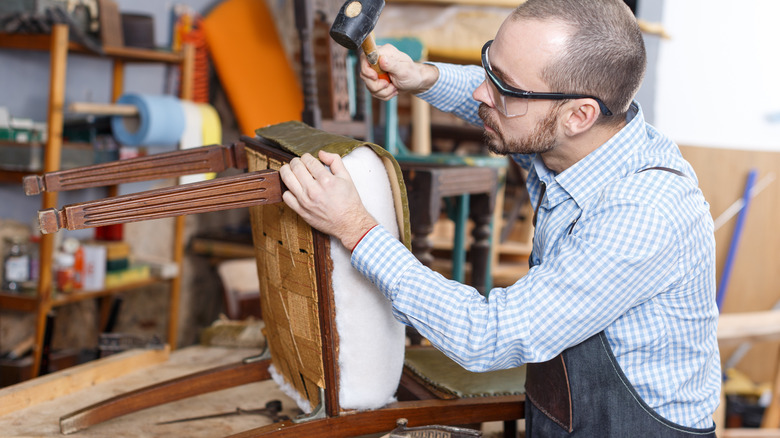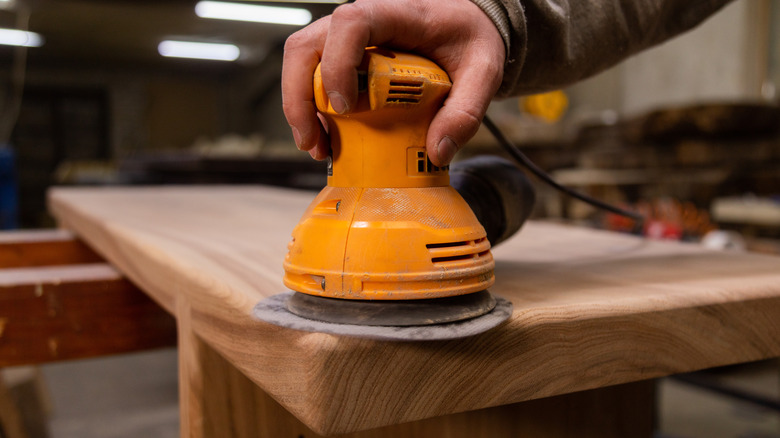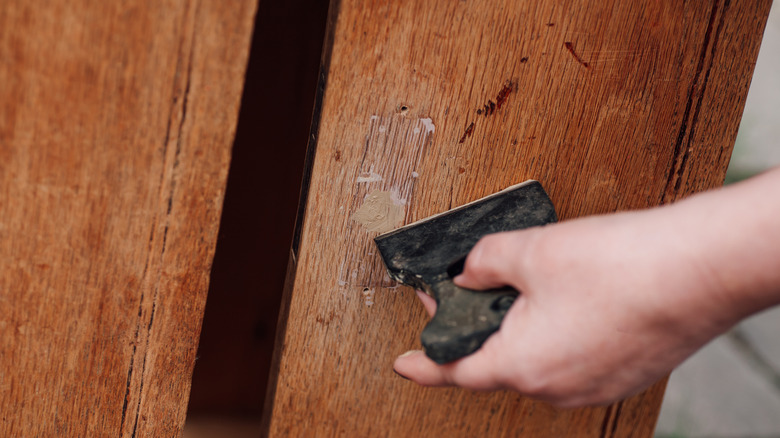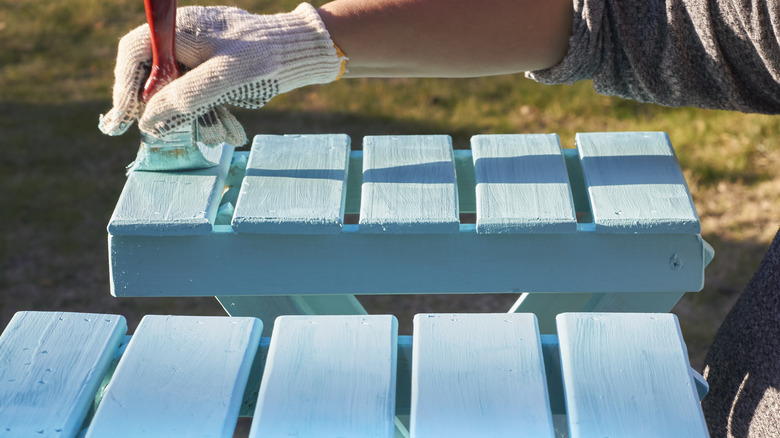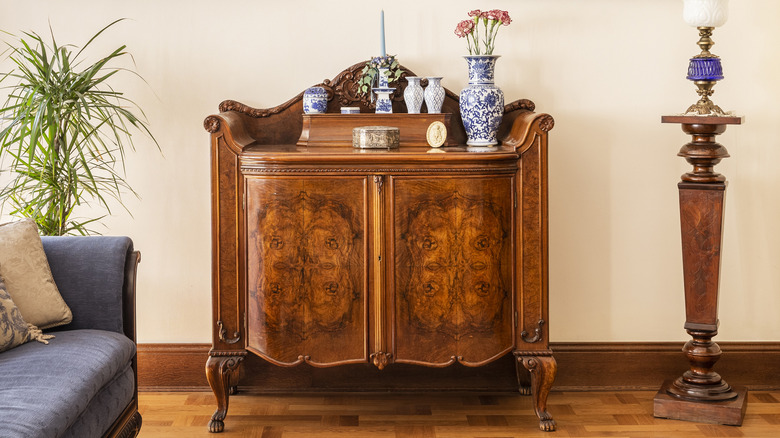5 Mistakes To Avoid When Flipping Furniture
You can give some furniture new life by updating and refurbishing old furniture. Flipping furniture isn't a new concept, but it has become a popular pastime and even a side job that many people are partaking in. The process is similar to flipping houses for profit but on a much smaller scale. It starts with finding undervalued furniture that you can clean up and sell for a higher price, says That Sweet Tea Life. Look for furniture at estate and garage sales, antique stores, flea markets, and online. You can then take this piece, refurbish or update it to add new life and sell it for a profit.
But as simple as the process might sound on paper, it's not that easy in practice. Flipping furniture can be time-consuming, requiring a lot of patience and dedication. Whether you're planning on selling the piece or keeping it for your home, you want to ensure that the flip is done well. You'll want to avoid these mistakes to ensure any furniture you make is as functional as it is beautiful.
1. Not prepping your piece
You've found the perfect piece of furniture to flip, and you want to jump into the project as soon as possible. Experts say that rushing or skipping over the prep step completely is one of the biggest mistakes you can make. After all, you need a good base to have a good finished product. While prep might not be the most exciting part of furniture flipping, it's absolutely essential if you want your paint or stain to be even, clean, and durable.
Prepping your furniture means cleaning, sanding, and priming it before getting started on any of the cosmetic details. You'll want to thoroughly clean the piece of any dust, dirt, stains, or gunk that might be on it. Take care to remove anything that's caked on or hard to remove as well. After cleaning, you'll also want to sand down your furniture. Little House of Four suggests using an orbital sander because it's small, easy to control, and versatile, which makes it a great tool for both beginners and experts.
When sanding, you want to move slowly and not press down as it glides across the surface of the furniture. And sanding in the direction of the wood grain will help prevent damaging the wood fibers. Right before you're ready to paint, you'll also want to prime the piece properly.
2. Covering not filling
Paint can do a lot for a piece of furniture, but it's not the way to hide imperfections. One of the biggest mistakes novice furniture flippers make is using paint to cover up imperfections. Damages can actually look worse with paint over them. Dents and cracks can stick out rather than appear hidden if you try to cover them up with paint. Filling imperfections is a critical step of prep before the painting phase. You'll want to do it after cleaning up the piece of furniture but before you start sanding. After filling, allow it to dry before sanding the surface smooth.
When it comes to filling imperfections, there are two main options: wood filler and wood putty. Wood filler dries hard while wood putty has a similar consistency to clay, according to The Handyman's Daughter. Wood filler is best used to fill large cracks and can provide some structural support, but it's best used for indoor pieces. It can be sanded and painted, unlike wood putty; its pliable texture doesn't allow it to be sanded. But wood putty can be applied to a piece after staining.
3. Rushing through painting
You're excited to finish your piece to either sell it or use it in your own home. Seeing it transform can be really exciting and hard to wait on. But experts recommend not rushing through the painting stage if you want a good finished product. In fact, you shouldn't go into the painting stage without a plan, according to Lovely Etc, which suggests figuring out if the finish is going to be smooth or distressed before you grab your paintbrush.
Distressed furniture works best with paint with a matte finish, while a flawless finish will work best using satin or semigloss paint. The quality of the paintbrushes also matters for the finish, but roller brushes are best if you're trying to cover large, smooth surfaces. You'll also want to ensure you're using the right primer for the kind of paint you're planning to use. Taking care of each step ensures you're getting the best finished product.
4. Getting too personalized
Designing furniture for yourself is different than designing furniture to sell. When you design furniture for your own home, you can do it any way you want. But if you're looking to flip and sell, then making a personalized piece might hurt the chances of it selling. When selling, you have to appeal to a wider audience. And since you can't account for the color schemes people use in their homes, it's best to stay away from crazy colors on the spectrum.
Neutrals are always a good idea. But when it comes to colors, blues and greens are popular options, according to Thistlewood Farms. That doesn't mean you can't use color in your designs. There is a market for bright colors and bold furniture. But it also wouldn't be a bad idea to have more neutral pieces that are often easier to sell. The same goes for any adornments and decor. There are some points when something simple will sell better.
5. Following trends too closely
Similar to how certain colors won't sell too easily, the same can be said for furniture trends. The trend cycle happens quickly, which often means that when you're ready to sell a piece, the trend might be on its way out. It's also much harder to fit items that are trendy into a home. Again, it's not to say that you can't infuse some trends into the furniture you flip. But following all the trends can lead to pieces that go unsold. It's better to opt for flips that feel timeless rather than too trendy.
The key to a timeless design is creating something that looks beautiful over the years, says Welsh Design Studio. It doesn't fit neatly into any one trend, so the look endures through all the ebbs and flows of the trend cycle. Clean lines and neutral colors never go out of style. But if you want to indulge in the current trends, use them as accents rather than the entire piece.
